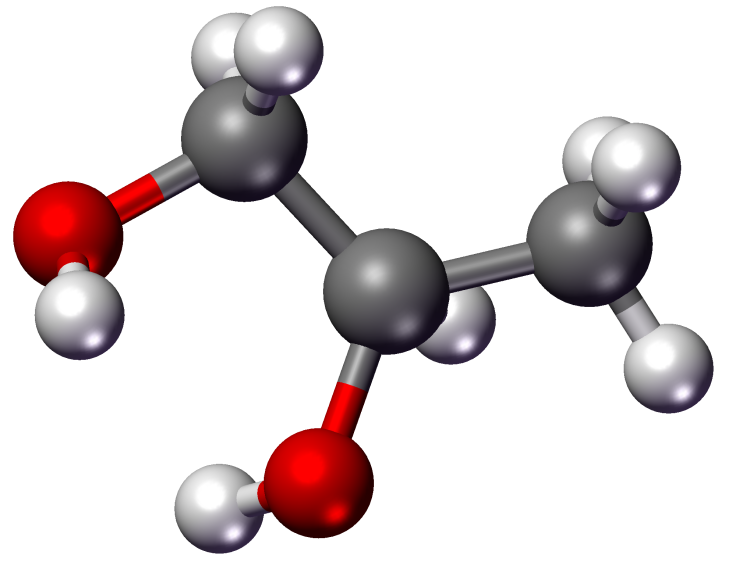What Is Propylene Glycol? Fireball Whisky Recall Centers On Ingredient

Propylene glycol sounds like something you wouldn't be able to find outside of a chemistry lab, but it's actually an ingredient in many foods and beverages, including Fireball Whisky. The chemical compound was thrust into the limelight on Tuesday, as news spread that a batch of Fireball Whisky had been pulled from shelves in Finland, Norway and Sweden because it contained levels of propylene glycol higher than the maximum amount approved for consumption by the countries' respective governments.
The company said in a statement late Tuesday night that "the product is perfectly safe to drink" and that the recall does not extend to North America, before delving into a defense of the controversial compound and its use in whiskey and other products.
"The ingredient in question was propylene glycol, PG. PG is a regularly used and perfectly safe flavoring ingredient," the company wrote. "PG has been used in more than 4,000 food, beverage, pharmaceutical and cosmetic products for more than 50 years. Most people consume PG every day in soft drinks, sweeteners, some foods and alcoholic beverages."
But Fireball Whisky producer, Louisiana's Sazerac Co., did not go so far as to describe exactly what propylene glycol is, and numerous news stories repeated the claim that the product is used in antifreeze and other unsavory applications. So what's the truth about propylene glycol?
For starters, it is considered a "toxic substance" by the Department of Health and Human Services' Agency for Toxic Substances & Disease Registry, ATSDR. As for its physical attributes, at room temperature it is "a clear, colorless, slightly syrupy liquid," according to the agency.
"Propylene glycol is a synthetic liquid substance that absorbs water. Propylene glycol is also used to make polyester compounds, and as a base for deicing solutions," the ATSDR states on its website. "Propylene glycol is used by the chemical, food, and pharmaceutical industries as an antifreeze when leakage might lead to contact with food."
There's that antifreeze connection again. Though propylene glycol is used as an antifreeze in vehicles, airplanes and boats, it also has applications that lead to it being used as a solvent for coloring and flavoring in foods and beverages. When consumed in large quantities, propylene glycol can lead to some minor health problems, though it is not classified as a carcinogen by leading health authorities.
"Propylene glycol increases the amount of acid in the body. However, large amounts of propylene glycol are needed to cause this effect, the ATSDR website states. "Propylene glycol breaks down at the same rate as ethylene glycol, although it does not form harmful crystals when it breaks down. Frequent skin exposure to propylene glycol can sometimes irritate the skin."
Propylene glycol -- also known as 1,2-dihydroxypropane, 1,2-propanediol, methyl glycol, and trimethyl glycol -- is indeed considered "'generally recognized as safe, GRAS,' by the U.S. Food and Drug Administration up to 50 grams per KG," as Sazerac wrote in its Tuesday statement, responding to the news of the recall in Northern Europe. By virtue of its being classified as GRAS, propylene glycol avoids the FDA's restrictions and regulations on food additives.
"[A]ny substance that is intentionally added to food is a food additive that is subject to premarket review and approval by FDA, unless the substance is generally recognized, among qualified experts, as having been adequately shown to be safe under the conditions of its intended use, or unless the use of the substance is otherwise excluded from the definition of a food additive," the FDA's website states.
GRAS ingredients are less stringently regulated, but that doesn't mean that all of them are entirely safe, according to many international health experts and medical evidence. That's why health officials in Finland, Norway and Sweden are wary of it despite the FDA's stance. Many GRAS ingredients have not been implicitly approved by the FDA in the same manner as traditional food additives and are instead tested by the very companies that seek to use them in foods, cosmetics and other products.
Propylene glycol has a range of applications that go beyond antifreeze and foods and beverages. It is used to make polyester compounds, in deicing solutions, in the plastics and paints industries, to absorb excess moisture and maintain moisture levels in medicines and cosmetics, to create artificial smoke and fog, and it is an ingredient in electronic cigarettes, also known as e-cigs or e-cigarettes, among other applications.
The FDA has not placed stringent restrictions on propylene glycol. Whether it will be regulated more strictly in the future remains to be seen, but in the meantime, it has become a part of many Americans' daily lives. Even a shot of whiskey at the bar can deliver a small amount of the compound. The question for consumers is whether they are willing to accept such a bargain.
© Copyright IBTimes 2024. All rights reserved.




















